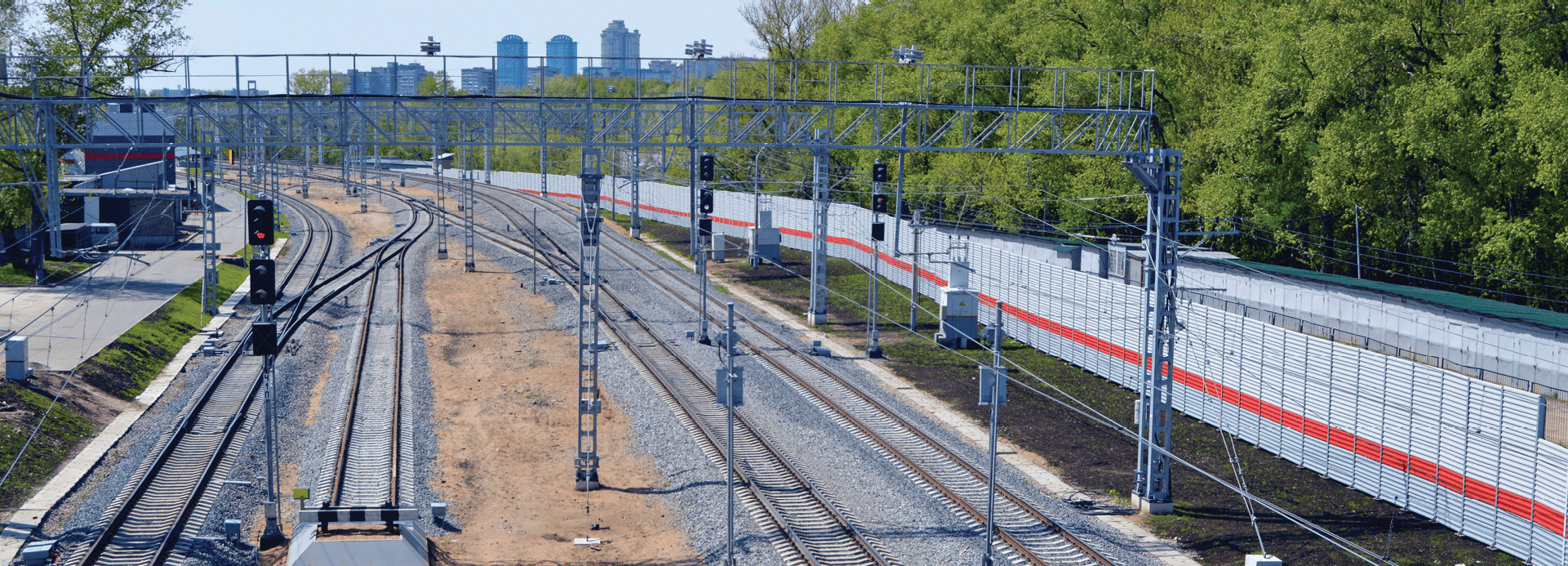Noise and vibration
Urban density comes with certain physical pollutants, primarily noise. Transport is one of the acoustic discomfort sources in urban areas. In view of this, the Company places special emphasis on minimising adverse physical factors and takes steps to reduce acoustic impact and vibration.
Minimising noise and vibration is a top priority for the Company’s Environmental Strategy.
Russian Railways keeps launching new, more efficient technologies and cutting-edge solutions to minimise the causes of noise.
Every year, we implement measures to reduce noise and vibration both at the noise source (wheel-rail interface) and along the route of transmission to the protected site.
In 2022, we put in place the following initiatives to reduce noise impact from railway transport infrastructure facilities:
- laid 4,323 km of continuous welded rails;
- ground 27,900 km of rails;
- ground 700 interlocked turnouts.
- installed 19.7 m high-elasticity rail pads;
- laid 26,900 sq m of sub-ballast vibration isolators;
- planted 10,000 trees and 27,600 shrubs.
In 2021, Russian Railways launched a large-scale project of noise mapping in the most critical areas to assess the noise pollution impact and distribution in urban areas near railway infrastructure. Work continued in 2022, with 33 noise maps developed for the most critical areas.
The Company regularly handles public queries and outlines comprehensive measures to mitigate acoustic discomfort within metropolitan areas. This includes checking and adjusting the loudspeaker operation modes, etc.
In December 2022, Russian Railways introduced a project to install sound insulation materials on the internal surfaces of VL10 and VL11 locomotives.
One two-section VL10U locomotive of the Rybnoye operating locomotive car shed of the Traction Directorate was equipped with soundproofing material and is currently undergoing trial runs on the Moscow Railway.
